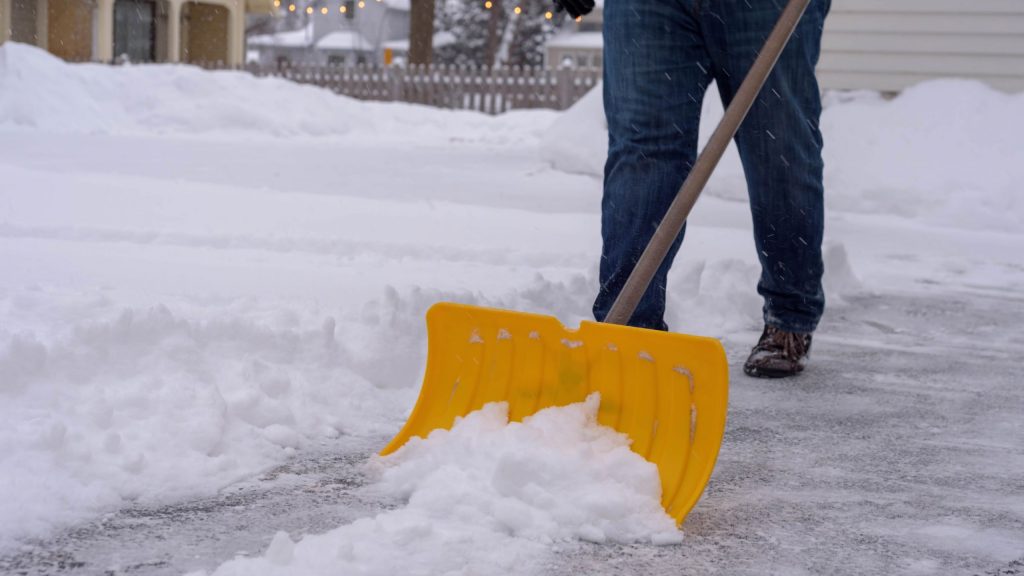
Avoid injury with these snow shoveling tips
Protect your heart…and your back
As the days grow shorter and the temperatures start to drop, it’s only a matter of time before we get a significant snow fall. And for most of us, that means shoveling.
Snow shoveling, when performed properly, is a great form of moderate physical activity. But for people who aren’t used to exercise, or are using poor technique, shoveling snow can be a major risk for heart attack or other injuries.
Look out for warning signs including uncomfortable chest pain or pressure, pain in the shoulders, neck and arms, light-headedness, significant sweating, nausea, or shortness of breath.
“Statistically, we see a rise in heart attacks and heart-related deaths after significant snowfalls,” says Dr. Craig Ainsworth, director of the Cardiac Care Unit at Hamilton General Hospital. “We can’t say for sure that this is caused by shoveling, but many experts believe it is.
“Repeatedly lifting heavy snow causes your heart rate to increase and blood pressure to rise considerably. For some people, especially those with certain risk factors, this can lead to a heart attack.”
VIDEO: Snow shoveling tips
For a clearer picture of proper technique, watch this short video where Janice Jaskolka, an ergonomist in Health, Safety and Wellness at Hamilton Health Sciences, demonstrates how to minimize strain while shoveling.
Who is at risk?
Those with known heart disease, people who are sedentary, or anyone middle age and older are at higher risk. Ainsworth advises people at risk to ask a friend or neighbour for help, use a smaller shovel to lighten the load or, if possible, invest in a snow blower. If you must shovel, look out for warning signs including uncomfortable chest pain or pressure, pain in the shoulders, neck and arms, light-headedness, significant sweating, nausea, or shortness of breath.
The importance of using correct form
Even if your heart isn’t at risk, shoveling incorrectly can do a number on your body. “Clearing snow early and often is an important part of reducing your risk for injury,” says Janice Jaskolka, an ergonomist at Hamilton Health Sciences. “Snow is lightest right after it falls.”
Before heading outside to tackle the snow, remember to:
– Dress appropriately in several layers and wear proper footwear to avoid slipping
– Clear snow early and often. Snow is lighter and easier to move when it first falls.
– Pace yourself and listen to your body.
– Take breaks, stretch frequently and drink plenty of water.
– Ask for help following large snowfalls.
Follow these steps when shoveling snow:
- Warm-up and stretch, especially if you’re shoveling shortly after getting out of bed.
- Place your feet shoulder width apart with one foot close to the shovel. Your weight should be on the front foot.
- Bend your knees and use your large legs muscles to push into the snow. Fill the shovel only halfway.
- Lift using your legs, breathing in and tightening your stomach muscles. Keep your back straight. Shift your body weight onto your back foot.
- Moving your feet, turn your body to the direction you want to place the snow.
- Keep the snow as close to your body as possible, and walk to where you want to place it.
- If possible, push snow rather than lifting, especially when wet or heavy.
Picking the correct snow shovel is just as important as using good technique!
– Chose a lightweight material and weighing no more than 3 lbs.
– Handle height should come up to the user’s chest to decrease forward bending
– Use a smaller blade shovel for lifting snow. The smaller blade will encourage less snow to be lifted, reducing risk of injury.
– Select a wide blade shovel when pushing snow.
“You’re better off taking your time and asking for help from the outset.”
“Clearing a large snowfall can be hard on the body,” says Jaskolka. “If you injure yourself shoveling, it can take a long time to recover. You’re better off taking your time and asking for help from the outset, rather than needing someone to do the whole job for you because you’re out of commission with an injury.”
We’re heading into what’s predicted to be a long and snowy winter season. Do yourself a favour and shovel safe!
